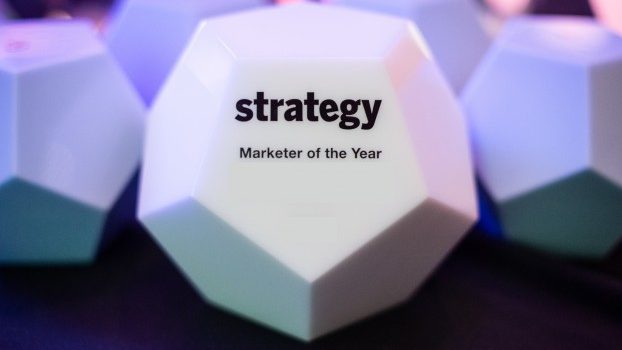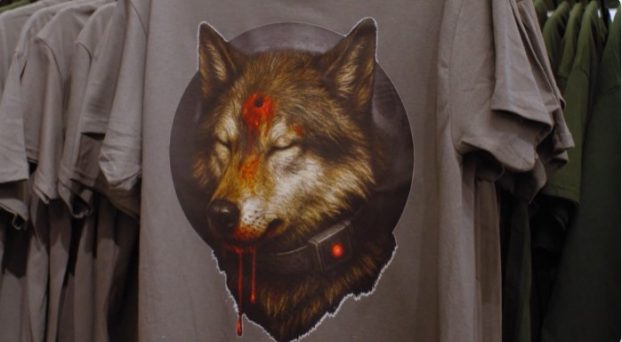
In the coming days, strategy will be revealing the 2025 Marketers of the Year. Check back here every day for profiles on the brand leaders, featuring today’s on IKEA’s Jonelle Ricketts and others including Metro’s Alain Tandros, Skip’s Rachel MacAdam and OLG’s Maxine Chapman. This article was previously featured in the Winter 2025 issue of Strategy Magazine.
By Will Novosedlik
When looking back at her career, Jonelle Ricketts makes it sound like the roles she played all just kind of fell in her lap. But what really matters is what she did with those opportunities once they presented themselves.
The head of marketing for IKEA Canada began her journey at Blackberry, back when it was still a B2B brand called Research in Motion (RIM). “We were really hands-on in those early days. We couldn’t afford the big agencies, so we relied on local freelancers,” she says. “We also did a lot ourselves. I found myself learning how to make animated digital banners and trade show ads, among other things.”
It was there that Ricketts learned her first hard lesson in competitive disruption when the iPhone arrived on the scene. Seeing the writing on the wall in 2011, she began to search for other opportunities. A marketing specialist role came up at IKEA, one that very closely resembled the work she had done at Blackberry, but which was focused solely on the Canadian market. So she jumped at it.
After six or seven years she got the itch, and left Canada to lead media for IKEA Netherlands. Ricketts and her team were responsible for the IKEA concept guidelines and frameworks for markets around the world. She arrived at the same time IKEA decided to stop producing its printed catalogue. “I was part of a transformation project, where we had to figure out what the future of marketing would look like without the catalogue,” says Ricketts. “It was another once-in-a-lifetime opportunity.”
Once again fate intervened, and she and her husband moved back to Canada for family reasons. Ricketts ended up finding a senior marketing role at Sephora, which exposed her to a very different side of the retail industry. IKEA is privately owned and therefore has much greater control of its supply chain, whereas Sephora taught Ricketts how to navigate a much wider group of suppliers and brand partners. After a year at Sephora, she was offered the role to lead marketing for IKEA Canada.
One of the things Ricketts appreciates the most about IKEA is that it’s not as much of a slave to the quarterly report as a publicly held company would be. This means it can pursue both short- and long-term objectives and grow the brand for generations to come, without shareholders breathing down its neck seeking a quick return.
Long-term thinking is especially important amid concerns about the proper balance between investing in brand-building vs. performance marketing. Because of IKEA’s unique retail footprint, the main short-term strategic marketing objective is to drive visitation. Ricketts and her team work with econometrics and media optimization tools to show the contribution that brand-building campaigns (and channels) are making to the business – not only for softer brand KPIs, but also in terms of driving visitation and sales.
One of the key drivers for IKEA consumers is affordability. So in response to rising inflation, the retailer began 2024 by investing $80 million in lowering prices on over 1,500 items, and another $50 million on 550 products at the start of 2025. To promote last year’s price slash, Ricketts worked with long-time agency partner Rethink on the “Spot the Difference” campaign, where consumers were shown two identical images of the same IKEA product side-by-side. Same materials, same style, same everything. The only difference was the price.
 From IKEA’s “Spot the Difference” campaign.
From IKEA’s “Spot the Difference” campaign.
At the time of its launch in April 2024, Ricketts told strategy the goal for the campaign, which lives under the “Bring Home to Life” masterbrand platform, was to underline that Canadians don’t have to sacrifice quality in order to protect their wallet. “We know that, with Canadians especially, they are out there looking for deals, but at the same time, they don’t want to compromise on quality either.” The campaign was also meant to empathize and connect with consumers by showing the brand understands the economic climate consumers are navigating.
 IKEA’s “Bring Home to Life” brand platform was launched in 2022.
IKEA’s “Bring Home to Life” brand platform was launched in 2022.
A month later in May, IKEA partnered with RBC to launch PayPlan, allowing customers to pay their bills over time. Ricketts and her team promoted the new financing option, with no hidden fees, in a campaign that introduced new flex payment options and annual rates as low as 0%.
Meanwhile, the retailer’s award-winning “Second-Hand Tax” or “SHT” campaign aimed to fight back against the unfair act of making people in Canada pay double taxes on second-hand items. With the help of Edelman, the brand created a “counter tax” that meant dropping the price of its second-hand items by 13%, so that customers ended up paying 0% tax on purchases.
To continue driving the “affordability” message home, Ricketts also resurrected the retailer’s iconic “Start the Car” spot by now-defunct agency Zig. Originally aired in 2004 to support a summer sale, “Start the Car” was so popular among Canadians that it was used to promote other sales over the years. Its comeback was aired exclusively on CBC during the 2024 Olympics, supported by online video, connected TV and social media.
 IKEA’s “Start the Car” spot originally aired in 2004 and was resurrected for the 2024 Olympics.
IKEA’s “Start the Car” spot originally aired in 2004 and was resurrected for the 2024 Olympics.
“I think the state of the economy has had a much bigger impact on consumer spending than many may have predicted,” Ricketts previously told strategy. “With thinner wallets and many Canadian consumers feeling less optimistic about the future, they are more conscious about how and where they spend their money. And it’s not always about seeking out the lowest price in the market, it’s about value for money.”
Beyond driving the retailer’s messaging around affordability, Ricketts has also pursued more innovative tactics to draw in different types of budget-conscious consumers. Take the launch of the brand’s first-ever live Twitch stream. IKEA partnered with the platform to create a two-hour live show with the help of Canadian content creator Bawkbasoup. The influencer acted as host and toured an IKEA store at night while interacting with viewers to help promote the home furnishing retailer’s new line of gaming accessories and furniture. The stream ended up being one of Twitch’s top-performing live streams ever, driving visitation and a sales lift for IKEA’s gaming range.
“We really stepped out of our comfort zone and reached an audience that normally doesn’t have that much interaction with us,” says Ricketts. The campaign reaffirmed her strategy to reach new audiences by focusing on more inclusive messaging.
Ricketts’ focus on diversity ties back to IKEA’s vision of creating a better – not just an affordable – life for Canadians. “We have a big focus when it comes to gender, ethnicity and disabilities. I know that’s not a priority for everyone, so I want to make sure that it’s baked into how we work and it creates opportunities for people from under-represented communities long after I am gone.”






















